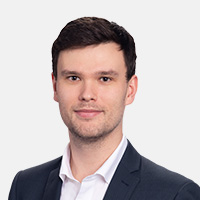Why Does the S&P 500 Matter to the Middle East?
Explore the expanding ecosystem of the iconic S&P 500 as S&P DJI’s Tim Edwards joins Cboe’s Sarju Gudka for a closer look at how and why market participants are putting the definitive gauge of U.S. large-cap equities to work in the Middle East.
Getting to Know the S&P 500 in Hong Kong
Why is the S&P 500 relevant to markets around the world? Take a closer look at this iconic index with S&P DJI’s Priscilla Luk and Hang Seng Investment Management’s Yvonne Ngai, including its role in our daily lives and some key highlights about why the S&P 500 is widely regarded as the best single gauge…
S&P 500 Highs Keep Coming
The S&P 500® closed at another record high today, marking the ninth all-time high closing price level so far this year. Although all-time highs are not unprecedented—2024 is the 41st year since 1957 to host a new high—a few observations stand out when looking at this year’s records. First, January 2024 saw the end of…
Chasing Performance
“…sometimes I’ve believed as many as six impossible things before breakfast.” – The White Queen, Through the Looking Glass Should an asset owner rely on historical performance data to select managers? The efficacy of doing so depends on the answers to three questions: What fraction of the manager universe is truly gifted? How gifted are…
Happy Days for How Long?
With less than a month left to go to close out the year, it’s a good time to reflect on the highs and lows that market participants have experienced. While the year began with a rocky start due to the Silicon Valley Bank collapse, the market continued to power forward, stumbling in Q3 as 10-year…
Active Success: Still Elusive
Anyone even vaguely conversant with our SPIVA® Scorecards will realize that most active managers underperform passive benchmarks most of the time. This result is robust across geographies and across time, and is reflected in our recently issued mid-year 2023 report for the U.S. market. Although the scorecard covers 39 categories of equity and fixed income…
Mean Reversion
Over more than 20 years of live history, the S&P 500® Equal Weight Index has outperformed the S&P 500 by a substantial margin. Between Dec. 31, 1990, and June 30, 2023, Equal Weight’s compound annual growth rate was 11.82%, well ahead of the cap-weighted S&P 500 at 10.55%. This performance edge is a product of…
Active or Agnostic?
In order to generate value for his clients, an active investment manager must deviate from a passive benchmark—by choosing sectors, or styles, or individual stocks that the manager predicts will outperform. The manager’s value is dependent on the accuracy of his predictions; the better he is at identifying the best sectors, or styles, or stocks,…
Persistently Disappointing
If you’ve ever read a prospectus (or, for that matter, an S&P DJI research report), you know that “past performance is no guarantee of future results.” At one level, if you understand that, you understand the most important thing about S&P DJI’s Persistence Scorecards. For the U.S., Europe, Latin America, and Canada (with Australia coming…
Disentangling Diversification
We frequently hear that “it’s a stock picker’s market.” The recent market environment could equally well be characterized as a sector picker’s market. To measure the importance of sectors, we decompose total market dispersion into within-sector and cross-sector effects. Exhibit 1 shows that the contribution of cross-sector effects to total S&P 500® dispersion has trended…


















































